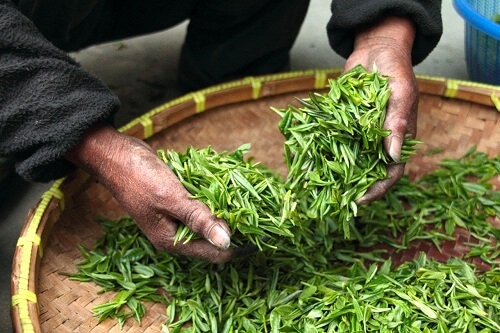 Arthritis is the inflammation of one or more joints in the body, which may be due to a genetic defect, a certain disease, an infection, or other causes. On a grander scale, arthritis covers other forms of joint diseases, both inflammatory and non-inflammatory, like gout, rheumatoid arthritis, juvenile rheumatoid arthritis (arthritis that affects those between the ages of 1-18), and osteoarthritis. The parts of the body commonly affected by arthritis are the following:
Arthritis is the inflammation of one or more joints in the body, which may be due to a genetic defect, a certain disease, an infection, or other causes. On a grander scale, arthritis covers other forms of joint diseases, both inflammatory and non-inflammatory, like gout, rheumatoid arthritis, juvenile rheumatoid arthritis (arthritis that affects those between the ages of 1-18), and osteoarthritis. The parts of the body commonly affected by arthritis are the following:
- Back and neck
- Shoulders
- Elbows
- Hips
- Wrist, hands, and fingers
- Knees
- Ankles
- Foot, heel, and toe
The inflammation brought about by arthritis generally causes swelling, pain, and stiffness in the joints and tissues that surround them. However, many people make the mistake of self-diagnosing any discomfort or pain they may feel in the areas mentioned above as a symptom of arthritis. While that can be a valid point, the best way to diagnose arthritis is through a consultation with your doctor or an orthopedist.
Chronic Pain
Arthritic pain becomes chronic when symptoms persist for more than three months. The pain can take a toll on your life, draining you of your ability to work and live normally. It can even cause fatigue, anxiety, sleeping problems, and depression. What’s worse is that the number of people affected by arthritis, which is now at 54.4 million American adults, continues to grow with no signs of slowing down. On the other hand, there are about 294,000 kids younger than 18 years old who suffer from juvenile rheumatoid arthritis.
Managing and Relieving Arthritic Pain
At present, there is no known cure for arthritis, although it is treatable. Non-steroidal anti-inflammatory drugs (NSAIDs) can provide relief, but your organs might suffer side effects in the long run. Applying topical creams for pain relief is a good alternative to taking oral pain medications without the possibility of developing kidney and liver side effects.
Incorporating these foods into your diet is also a good idea, as these can naturally relieve you of the painful symptoms of arthritis:
Something Familiar: Green Tea
Green tea has a natural antioxidant called EGCG (epigallocatechin-3-gallate) that is not present in other kinds of tea. This antioxidant and the other catechins in green tea may help prevent the regression of cartilage. In turn, it can also help in preserving healthy joints or fighting arthritis.
Powerful Antioxidant: The Carotenoids
Carotenoid, or its variety, beta-carotene that can be converted into Vitamin A, is a powerful antioxidant found in foods like pumpkins, butternut squash, carrots, kale, cantaloupe, sweet potatoes, and spinach. Along with its relative beta-cryptoxanthin, it can help ease the discomfort brought on by rheumatoid arthritis. Beta-cryptoxanthin is found in persimmons, papaya, winter squash, red peppers, corn, pumpkin, tangerines, oranges, and apricots.
Immune-boosting Vitamin C
Vitamin C is a precursor of collagen formation, which is a principal component of your cartilage. Studies show that people who consume less vitamin C face a higher risk of arthritis. Thus, eating vitamin C-rich foods may constitute an effective treatment against arthritis. These include oranges, grapefruits, guava, bell peppers, broccoli, kidney beans, strawberries, pineapple, kiwi, and cauliflower.
Fresh from the Sea: Omega-3 Fats
Generally, unsaturated fats are discouraged because they are considered unhealthy. A few healthy types include the Omega-3 fats from seafood. It works to decrease inflammation through the suppression of the synthesis of a kind of enzyme that can wear away cartilage. The best sources are salmon, Pacific oysters, sardines, anchovies, herring, mackerel, rainbow trout, as well as flax seeds, walnuts, and chia seeds.
The Pride of the Mediterranean: Olive Oil
Olives are known for their healthy monounsaturated fats and a natural compound referred to as oleocanthal that is known to prevent joint inflammation. This oil also helps you reduce your weight, thereby reducing the stress in your joints.
Dark and Rich Anthocyanins
You must have heard of the wonderful and potent antioxidants found in blueberries and its dark-colored relatives. These are said to contain anthocyanins that fight inflammation and contribute to the health of connective tissues. These are even said to be more powerful than vitamin C. You get this by eating foods rich in anthocyanins such as blackcurrants, eggplant, cherries, plums, red and black grapes, blueberries, blackberries, elderberries, raspberries, boysenberries, and strawberries.
Rooty Spices: Ginger and Turmeric
These spices are said to have anti-inflammatory effects and have been used for thousands of years both as a spice and as a curative agent. These are not just ingested to work internally; these may also be used as a topical ointment that is massaged on the joints.
With a healthy diet incorporating the foods and herbs listed above, proper exercise, and managing your day-to-day activities, you can relieve some arthritic pain and potentially improve day to day life.


Comments